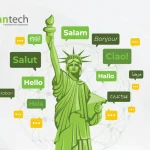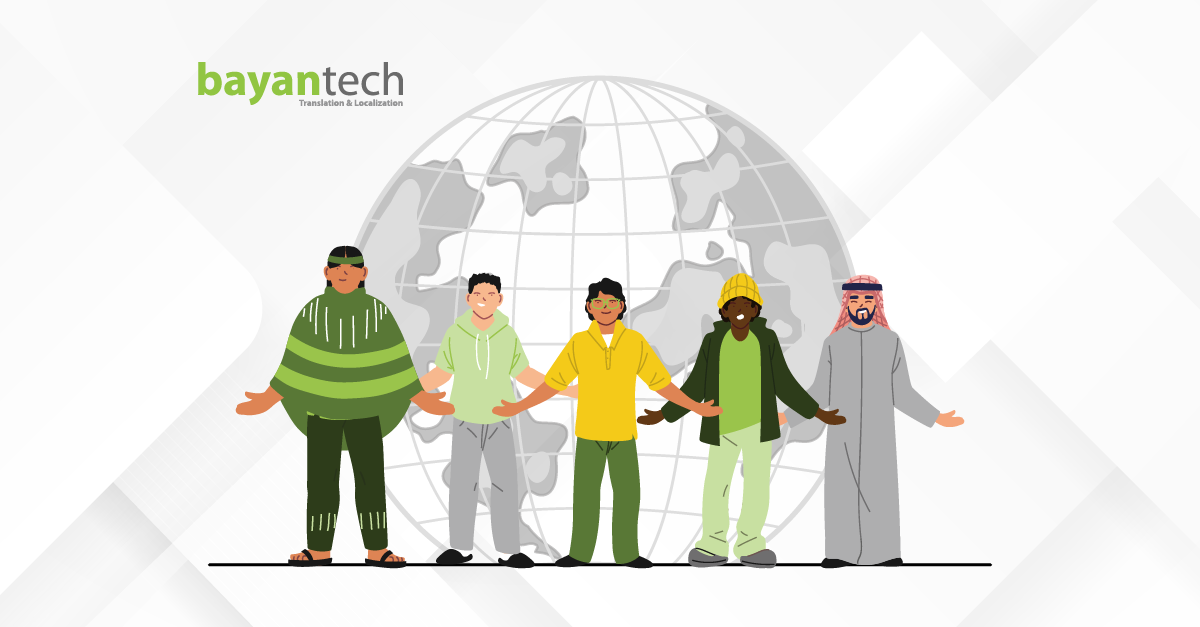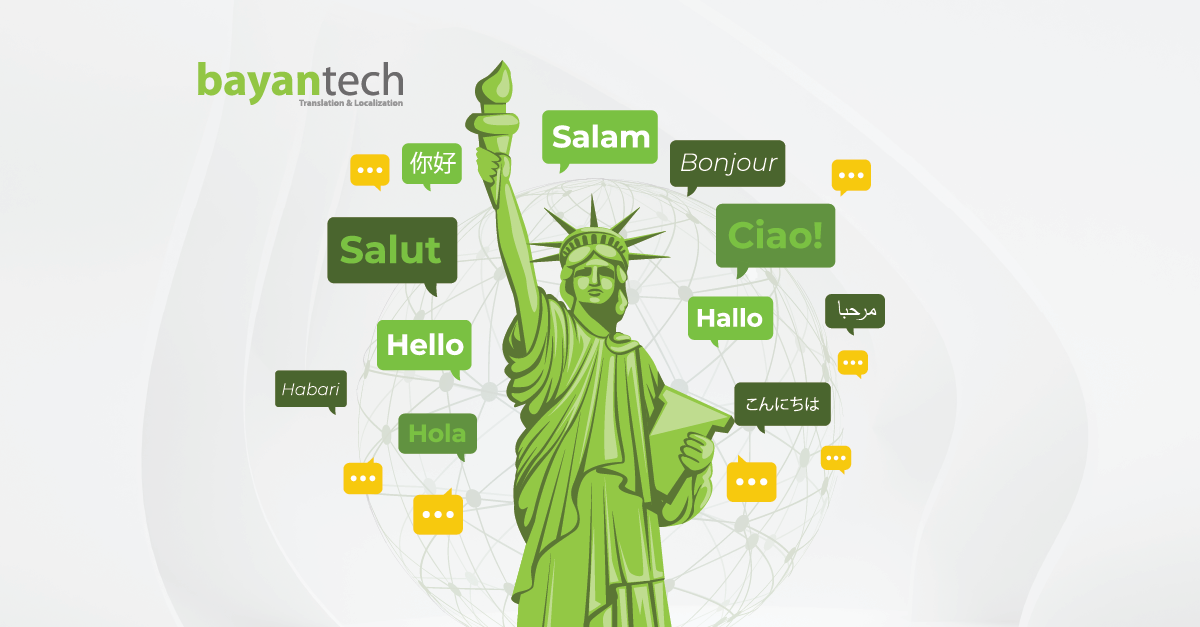Global expansion brings opportunities, but it also comes with risks. One of the biggest? Translation challenges.
Too often, companies think translating content is just about swapping words from one language into another. In reality, the translation process is far more complex.
Without the right approach, your message can lose meaning, tone, or even offend the very audience you’re trying to reach.
Cultural nuances, industry-specific terminology, and maintaining a consistent brand voice all play critical roles in shaping perception. Add in the overreliance on machine tools, and businesses face an even greater risk of miscommunication.
That’s why investing in professional translation services is more than a box to tick; it’s a strategy to protect your brand and ensure your message resonates worldwide.
In this guide, we’ll explore the most common challenges, their impact, and proven strategies to overcome them.
Common Translation Problems Businesses Face
Expanding globally means navigating languages, and with that comes plenty of room for error.
Here are some of the most common translation problems that can derail your message:
1. Word-for-word pitfalls: A direct, word-for-word approach may look accurate but it often distorts meaning. What makes sense in one language can sound awkward or even offensive in another.
2. Figures of speech and idioms: Every culture has unique expressions. For instance, “It’s raining cats and dogs” translated literally into Spanish (“Está lloviendo gatos y perros”) makes no sense. Such direct renderings can leave your brand sounding awkward or out of touch.
3. Source text complexity: If the source text is overly long or poorly structured, translators have less room to ensure clarity and nuance in the target language. Clear writing from the start helps prevent costly errors.
4. Target language fluency: Even small nuances matter. For instance, using the informal “tú” instead of the formal “usted” in Spanish can come across as disrespectful. Such slips weaken trust in local markets.
5. Machine translation limitations: While fast and convenient, machine translation struggles with humor, cultural references, and emotional tone. It lacks the context and creativity needed to make your message resonate.
Ultimately, these challenges remind us that translation isn’t just a technical process; it’s a strategic investment in how the world sees your brand.
Why Culture and Brand Voice Are at the Heart of Translation
Successful global communication is about adapting to the cultural context of each market. Subtle differences in meaning, tone, and symbolism can make or break how your message is received.
Consider these examples of cultural nuances that can shift brand perception:
- Humor and wordplay: A witty pun that works in the U.S. may confuse audiences in Germany, where communication tends to be more direct.
- Colors and symbols: White symbolizes purity in Western cultures, but mourning in much of East Asia.
- Mistranslated references: KFC’s “Finger-lickin’ good” was once translated in China as “Eat your fingers off,” creating an unintended and awkward message.
- Brand voice consistency: A luxury brand using elegant English must reflect the same refined tone in Arabic, French, or Japanese, or risk appearing inconsistent.
That’s why relying on native-speaking professionals is essential. They bridge these cultural and linguistic gaps, ensuring your message feels authentic and aligned with your brand voice in every market.
Technology Can Help (or Hinder) Your Translation Process
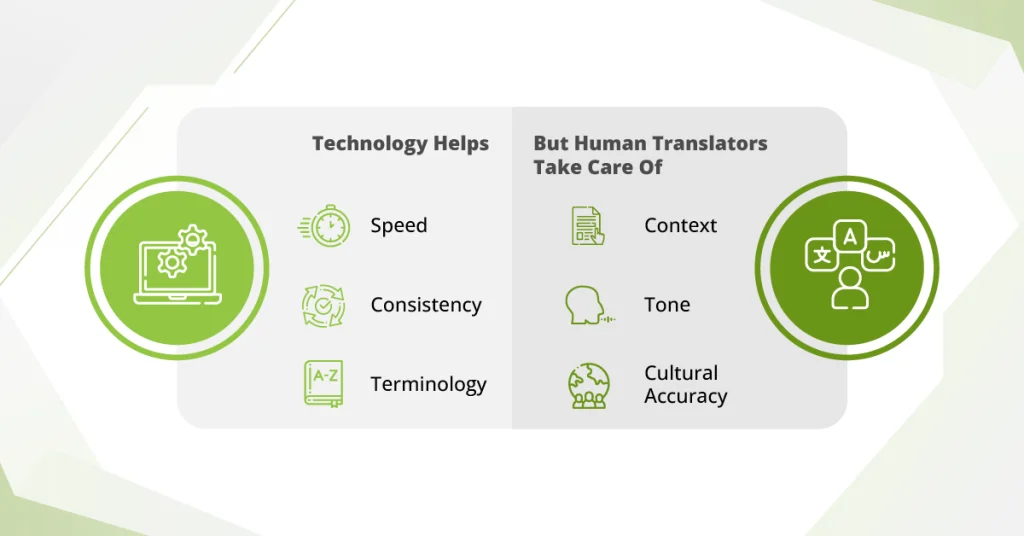
Businesses now have access to a wide range of translation tools that improve efficiency and consistency.
Computer-Assisted Translation (CAT tools) help manage large projects, while terminology databases ensure consistent use of brand and industry-specific terms. Machine translation (MT engines), such as DeepL, can provide quick drafts when speed is critical.
But technology has its limits. Machine translation often misinterprets context, tone, and cultural meaning. Automated systems also struggle with figures of speech, idioms, or brand-specific style, producing content that feels mechanical instead of engaging.
That’s why professional translation services are essential for high-stakes content like marketing campaigns, legal contracts, or product documentation.
Human linguists provide the cultural insight, tone sensitivity, and quality assurance that software cannot.
The most effective strategy is a balanced one: use translation software to streamline workflows, but always rely on human expertise to safeguard accuracy, brand voice, and cultural relevance.
Translating Marketing Content Comes with Risks
When it comes to marketing materials, translation is never straightforward. Unlike technical or legal text, marketing copy is designed to spark emotion and connect with audiences, making it one of the most difficult types of content to adapt.
Key challenges include:
- Balancing persuasion with cultural nuances: An example of a tagline that misfired is Pepsi’s slogan “Come alive with the Pepsi Generation”, which was rendered in Chinese as “Pepsi brings your ancestors back from the grave.” What was meant as fun and energetic became culturally inappropriate.
- Tone matching across markets: A playful brand voice in English may need refinement in markets where business communication is more formal. For instance, financial services marketing in the Middle East often leans toward authority and trustworthiness, rather than humor or informality.
- Missteps in humor or emotional appeals: Humor doesn’t always travel well. An American pun might be meaningless in Germany, where audiences prefer straightforward clarity. Similarly, emotional cues like individuality resonate in Western ads but may clash with collectivist values in Asian markets.
- Localizing visuals, not just text: Marketing isn’t only words. Colors, symbols, and gestures can backfire. Red, for example, suggests luck and prosperity in China but can signal danger in other contexts. Choosing visuals without cultural awareness risks sending the wrong message.
This is why professional translation services are vital. They go beyond words to ensure your marketing campaigns resonate emotionally while staying true to your brand identity worldwide.
How to Overcome Translation Challenges
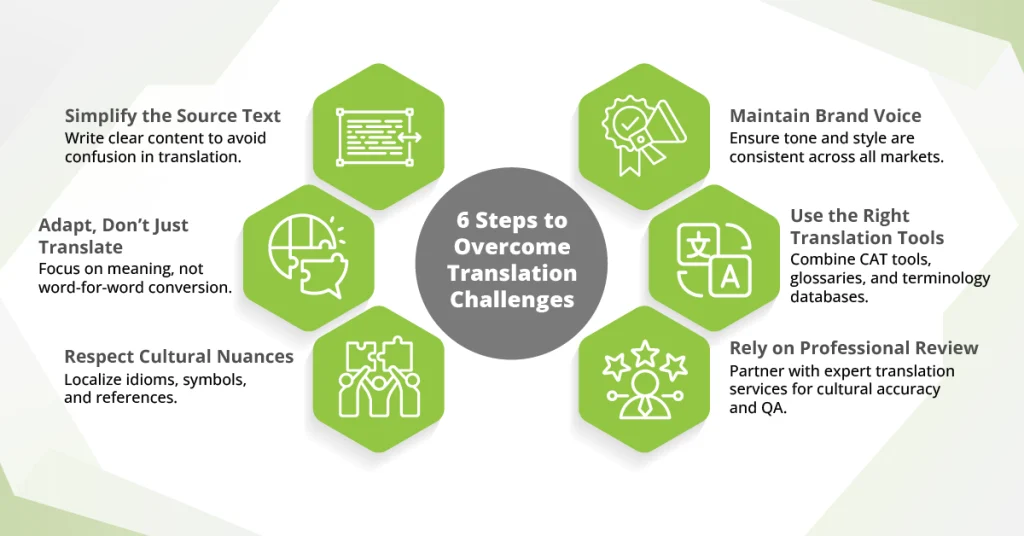
The good news is that most translation problems can be prevented with the right approach. By building a solid translation process, you protect your brand while connecting authentically with global audiences.
Key best practices include:
- Start with clear source text: Concise, well-structured content is easier to translate accurately.
- Involve native speakers: Professional translators who are native speakers bring the cultural insight needed to adapt tone and style.
- Implement a full review cycle: Quality assurance, editing, and brand alignment checks ensure consistency across markets.
- Limit reliance on machine translation: While helpful for drafts, machine translation should never replace human review for customer-facing content.
- Leverage smart translation tools: Use a translation tool that supports collaboration, glossaries, and context tracking for smoother workflows.
With the right strategy and team, your message can travel across languages without losing clarity, impact, or cultural relevance.
Work with Translation Experts Who Understand Culture, Context & Conversion
Expanding into new markets doesn’t have to be risky. With the right partner, you can overcome translation challenges and ensure your message resonates everywhere you do business.
At bayantech, we help brands avoid costly mistakes by combining linguistic accuracy with cultural fluency.
Our expert translation services preserve your brand voice, adapt your message for local audiences, and deliver the consistency global growth demands.
Ready to connect with your audience worldwide?




